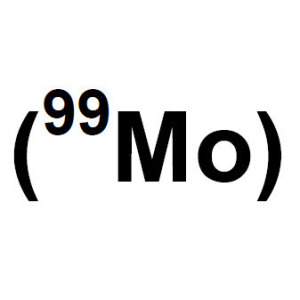Low-enriched medical isotopes hit U.S. shores
by
Brendon Nafziger, DOTmed News Associate Editor | August 27, 2010

Now from low-enriched uranium.
A batch of medical isotopes reached U.S. shores last month with one difference - they were produced using low-enriched uranium.
The isotopes could be the vanguard for a growing movement to switch to LEU, as nonproliferation advocates want to limit export and use of high-enriched uranium, which can be used to make weapons.
The shipment of molybdenum-99 that arrived July 21 came from NTP Radioisotopes, a subsidiary of Nuclear Energy Corporation of South Africa, or Nesca, reports engineering news service Creamer Media.
Moly-99 is "milked" to create technetium-99m, an isotope used in 80 percent of all nuclear medicine scans. Moly-99 is usually created with HEU.
Nesca's plant underwent initial LEU conversion in June 2009 and is believed to be the first plant ready to make medical isotopes on a commercial scale that don't require enriched uranium.
"When the conversion project is complete, it is expected that South Africa will be the world's first large-scale, all-LEU producer of medical isotopes," officials with the National Nuclear Security Administration told DOTmed News by e-mail.
The Australian Nuclear Science and Technology Organization is also scaling up its LEU-based production for global exports, the NNSA said. ANSTO inked a deal with Lantheus Medical Imaging, a maker of diagnostic imaging drugs, in June 2009 to supply LEU-made moly-99 from its Opal reactor.
But these LEU-made isotopes are still some time away from patient use. Nesca's isotopes first have to undergo testing by the U.S. Food and Drug Administration before they can ever go into people. The shipments also reached radiochemical and radiopharmaceutical merchants, such as Lantheus and its competitor Covidien.
"Lantheus is very pleased with the progress that Necsa/NTP is making with their LEU conversion program," William Dawes, N. Billerica, Mass.-based Lantheus' vice president of manufacturing and supply chain, told DOTmed News by e-mail. "We are looking forward to working with NTP over the balance of the year to complete the qualification of their LEU material in our Technelite manufacturing process."
Converting production of medical isotopes from HEU to LEU is complex and involves managing increased volumes of waste, the NNSA said, but is only a tad more expensive. A 2009 National Academies Report, "Medical Isotope Production without Highly Enriched Uranium," determined that making moly-99 with LEU would result in a less than 10 percent increased cost of the isotope, the agency said.
The American Medical Isotopes Production Act, which passed in the House last year, would ban export of enriched uranium and require domestic production of radioisotopes. A Senate version of the bill has been held up by Sen. Christopher Bond (R-MO.).
